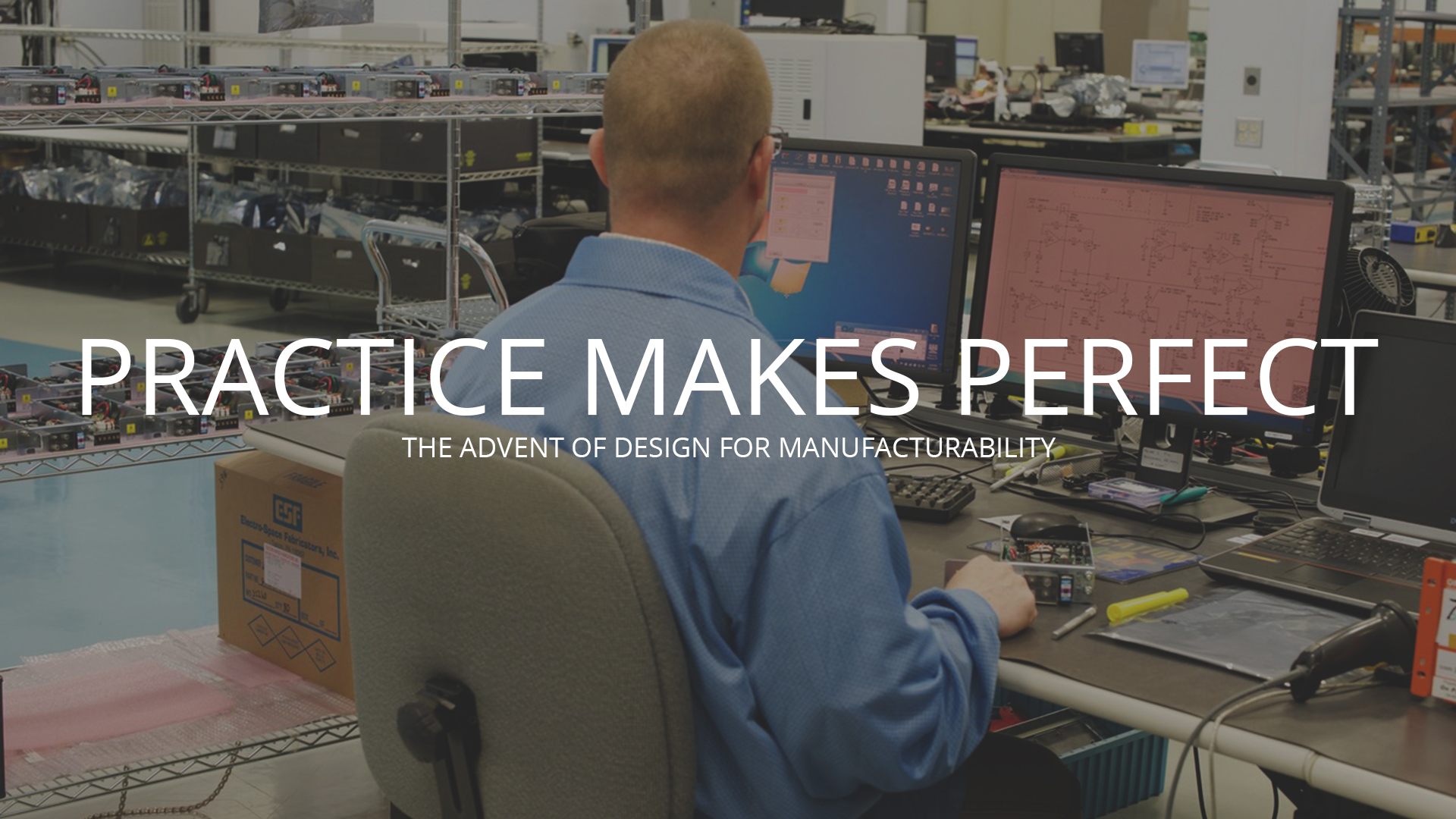Design engineers wear many hats and play many roles in every step of new design development. Their expertise can help reduce many of the cost drivers of new product development, such as time to market requirements, product specifications, and overall practices to improve fit, form, and function of a product, among other things.
Engineers are also frequently used in lead roles, overseeing research and development teams, prototype creation, and the fine-tuning needed to ready a product for market.
What does a Design Engineer do?
From Idea to finished product, and everything in between
The design engineer’s primary responsibility while developing new designs is to create a product design that fulfills a company or client’s strategic goals while integrating the needs of the marketing, sales, and manufacturing departments. Engineers are frequently called upon to consult with market researchers and supply chain vendors to assess everything from materials availability, current competitive landscape and outlook, market demands, and cost structure.
Out of Thin Air: Manifesting an Idea (and the tools to do it)
Design engineers use a variety of programs to bring their designs to life. It’s a process of designing the project’s components, manufacturing the parts themselves, verifying that the parts are up to quality standards, and assembling the product. During this time, fixtures and molds must be designed, assembly instructions guides are required, and the parts and their design drawings must match up.
A good design strategy include three sequential procedures, mainly, Design for Manufacturability (DFM), Design for Inspection or DFI, and Design for Assembly (DFA).

Design for Manufacturability (DFM)
Design for manufacturability, or DFM for short, is designing a product while keeping costs to manufacture it to a minimum. Addressing cost issues in the design phase is the least costly time to do so.
For years, DFM was a tedious, labor-intensive process, replete with tables, lists, and multiple checklists. However, today’s engineers can utilize a DFM software package to become integrated with a CAD (computer-aided design) program. The CAD program provides information about needed materials, processes, dimensions, and tolerances. Using DFM software can then flag the appropriateness of certain inputs right away, such as materials not within your budget, and small errors in design that could cost you big time down the line.
As automation becomes more prevalent in manufacturing plants, involved in many processes, the production stages become optimized and less expensive. DFM is then utilized to reduce costs further. As the capabilities of manufacturing increase and expand in scope, DFM is evolving alongside them.
Design for Inspection (DFI)
Another engineering principle in manufacturing design development is Design for Inspection or DFI.
DFI uses methods and instruments of metrology(measurement) early in the design process, making issues easier to detect and correct. This early discovery and correction can reduce overall costs of production.
While inspection alone can’t satisfy quality, it is still crucial that engineers can perform early in the design development process. The highly-trained, problem-spotting, problem-solving, engineering mind is crucial to this scrutinizing stage of design. Sophisticated insights are required to understand the product being manufactured and which inspection parameters will yield the best path forward for the project.
DFI can wield a double-edged sword: while it can catch measurement and tolerance issues early on, it can also lead to an augmented inspection rate to achieve the insights needed before proceeding through the production process. This approach can be justified if costs can then be controlled or, optimally, reduced, both internally (rework or scrap,) and externally (customer returns).
Design for Assembly (DFA)
The third pillar in the suite of engineering design principles, after DFM and DFI, is Design for Assembly, or DFA. DFA can achieve a number of different goals for the design engineer: it can help manufacturers lower the cost of the actual product, increase production volume, create a simpler product, or increase product reliability and quality. Manufacturers want to realize this without adding floor space, more assembly line workers, or even another factory.
Creating a product with fewer parts will naturally require less time to assemble. If the parts themselves are designed to facilitate assembly (optimized form, ease of insertion, and ability to grasp and easily orient), this will result both money and time saving. Because the cost of parts hovers around 70-75% of a product’s cost to the consumer, optimized DFA can have a tremendous impact on price.
DFA came about incrementally, first as an approach that considered basic issues from the beginning of the design stage. Then, in the 1970s, engineers started applying numerical evaluations to these processes. Hitachi developed the first Assembly Evaluation Method (AEM.) It held to the maxim of one motion for one part and used a point system for assessing ease of assembly.
DFA as a particular process and approach got its name at UMass-Amherst, when research engineer Geoff Boothroyd developed three simple criteria to determine which parts to eliminate and which to keep, in order to minimize the number of components overall. The criteria looked at certain design factors that affected how to evaluate a product’s design from the viewpoint of the assembler. The insertion, or feeding, and parts orientation into a machine was considered for assembling. While the DFA method for manual assembly has been adopted worldwide to resound success and impact across industries. It’s computerized version, introduced in 1981 that allowed it to be implemented into an astoundingly broad range of companies. This new application won both Geoff Boothroyd and his partner, Peter Dewhurst, the National Medal of Technology, among other awards. Their innovation has saved companies hundreds of millions of dollars over the past 30 years (Ford Motor Co. reported savings of almost $1 billion in 1988), and DFA has now required software worldwide.
Hats off to engineers everywhere, making life a little less complicated, cost-friendly, and a lot more productive, one design at a time.
For more on WORLD’s capabilities visit our services page and follow us on LinkedIn.
Related Articles